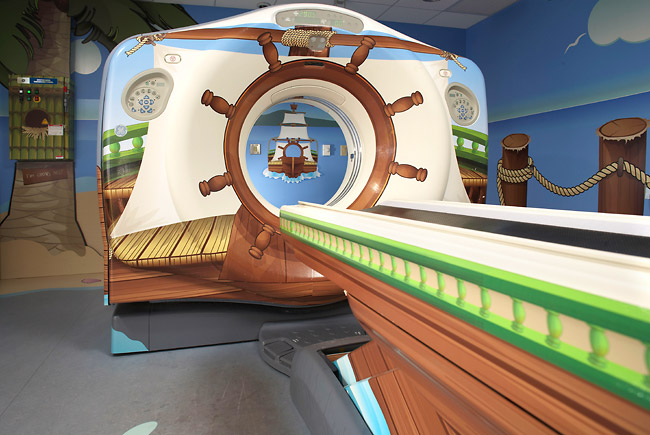Customer Experience Innovation From The Outside In
Firms crave differentiation. But the truth is that even companies with dedicated time and budget for customer experience innovation focus most of their efforts on two things — whatever their competitors are doing and whatever the latest technology enables them to do. When companies blindly add shiny new features or trendy technologies to their mix of customer experiences, they’re innovating just for innovation’s sake.
To shed scattershot innovation efforts that produce little business value, customer experience professionals must examine their business challenges and associated opportunities in a different way — from the outside in. This first and vital step in the innovation process requires immersion in customers’ lives. The end goal? Developing empathy for your customers so that you can discover their unmet needs.
Someone who really understands this is Doug Dietz of General Electric Healthcare (GE Healthcare). Doug had been designing CT and MRI scanners at GE Healthcare for 20 years. As a product designer, he concentrated mostly on the aesthetics and the ergonomics of these machines, or what he calls “the shiny objects.” He was incredibly proud of these shiny objects. And he had good reason — on hospital visits, technicians would shower him with compliments.
But Doug’s machines didn’t so well work for one key customer segment: little kids.
On one particular visit to a children’s hospital, Doug watched a little girl walk in, holding her parents’ hands. She took one look at the MRI machine, which Doug had been so proud of just moments before, and she started to cry. Doug learned that a huge percentage of children get so panicked about their procedures that they actually require sedation. He says, “I thought to myself . . . I’m kind of a failure.”
To be successful, Doug had to rethink the entire children’s imaging experience. So he teamed up with Children’s Hospital of Pittsburgh, the children’s museum of Milwaukee, and childhood development experts. He held design sessions in daycare centers. The design team members did simple things, like kneel down and look at the imaging rooms and equipment from the height of a child. They developed empathy for what these sick children were going through. And together, they designed a new experience to help kids feel less afraid.

The heart of the experience is a set of decals that transform the imaging room and scanner into an adventure landscape. For example, in the pirate-island theme, the scanner’s been made to look like a pirate ship. But the adventure doesn’t stop there. When the hospital technician greets the patient in the waiting room, she gives him a black-felt pirate hat and growls, “Aaaarrrr ye ready?” Then, as the child walks into the room, he doesn’t get hit with that weird hospital smell — he smells coconut that’s wafting up from an aromatherapy vaporizer. And when the procedure is over, he receives a hero’s award that he can share with friends and family.
Think about the benefits:
- The kids are actually excited about their imaging adventure, and that means that a lot fewer of them need to be sedated.
- You can only imagine what a relief that is for concerned parents.
- The radiologists get more accurate images because the children are calm and cooperative.
- Faster, easier procedures that don’t require an anesthesiologist help the hospital to increase throughput and save money. The hospitals also gain competitive differentiation — if you had a choice of which hospital to take your child to, wouldn’t you choose the one with the pirate ship?
- And GE Healthcare, the company that Doug Dietz works for, also gains competitive differentiation in its B2B market.
This is a win-win situation. Or, really, a win-win-win-win-win situation.
And it all started with a seed of empathy.
I'll be speaking more about innovation at Forrester's Forum For Customer Experience Professionals East, June 25th and 26th in New York. Hope to see you there!